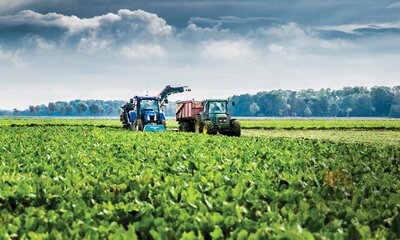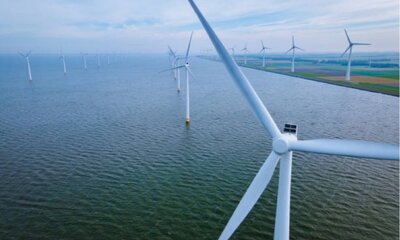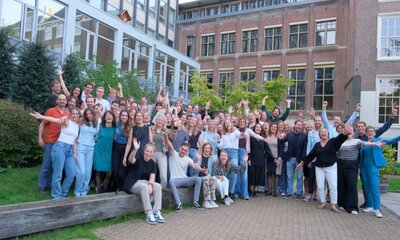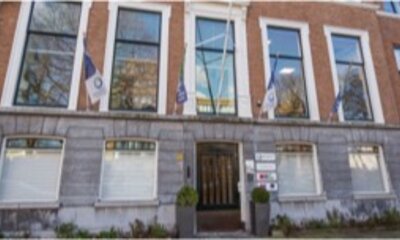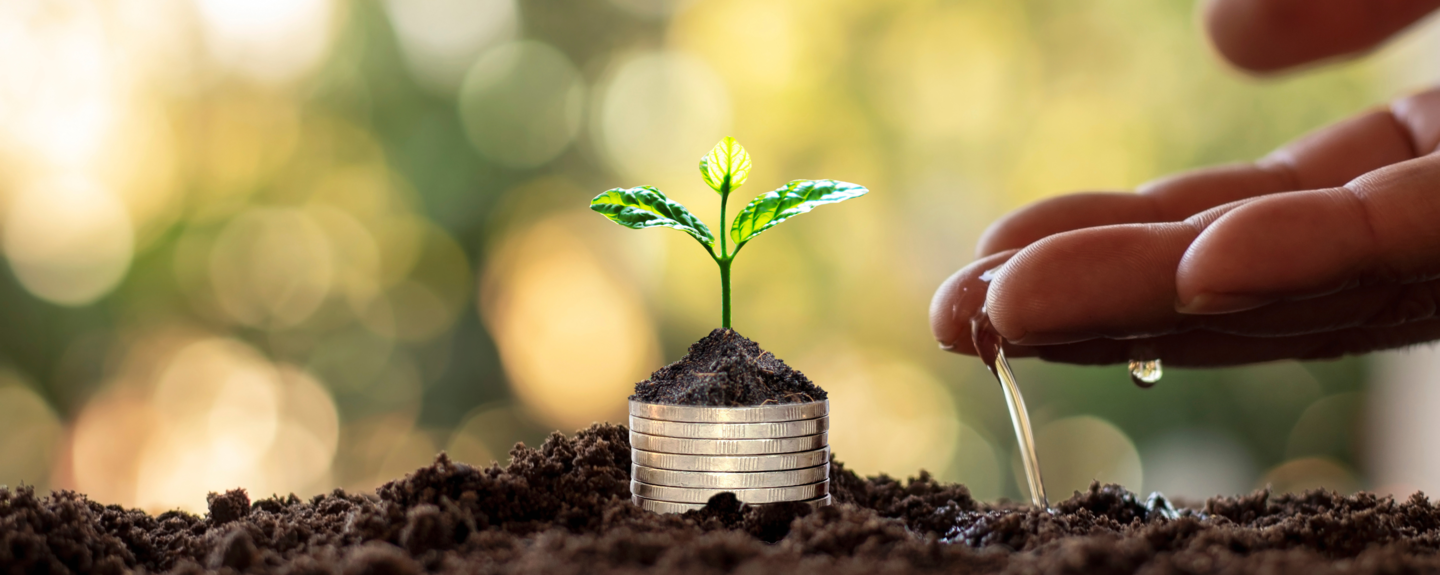Budgeting for the future: how the 2028-2034 MFF will shape agriculture
The European Union is charting its financial course for the coming years with the proposed Multiannual Financial Framework (MFF) for 2028-2034. As President von der Leyen stated during the press conference on July 16, this is “a budget that matches Europe's ambition, that confronts Europe's challenges, and that strengthens our independence”. This budget proposal aims to equip Europe to address new challenges and evolving priorities, but it also signals significant shifts in the EU’s budgetary focus. Among policymakers as well as farmers and agri-food stakeholders, this proposal has sparked a mix of hope and concern. Understanding these changes is crucial not only for those in the agri-food sector but for anyone engaged in shaping Europe’s future across all sectors.
The Multiannual Financial Framework – the EU’s pot of gold
The MFF is the EU's long-term budget, setting the maximum level of spending for each major category of expenditure over a seven-year period. On July 16, 2025, the European Commission presented its proposal for the 2028-2034 MFF, which combines a new MFF, a revised Own Resources Decision (ORD), an Interinstitutional Agreement (IA), and a first wave of sectoral proposals.
The new MFF amounts to a total of EUR 1.98 trillion, or 1.26% of the EU’s gross national income (GNI) on average. It is designed to provide a long-term investment framework that addresses core EU’s priorities, such as competitiveness, innovation, security and defence, and a green, thriving society and economy. Notably, the climate spending target even increased from 30% to 35% of the MFF. The budget aims to achieve results that national budgets cannot deliver alone. Key features include greater flexibility, simplified financial programmes, tailoring to local needs through National and Regional Partnership Plans (NRPPs), and a powerful competitiveness boost. Additionally, to keep overall GNI contributions of Member States unchanged, the MFF also introduces a new set of own revenue resources. Ultimately, the MFF is more than just numbers. It serves as an expression of the EU’s political priorities, enabling predictable long-term planning and more effective spending through reform and investment plans than national budgets could achieve independently.
MFF and the CAP
The Common Agricultural Policy (CAP) remains a pillar of EU policy, supporting farmers and rural communities while ensuring food security and promoting environmental sustainability. Its goals include providing 450 million EU citizens with access to affordable, safe, and high-quality food, offering farmers stability and predictability amidst geopolitical shifts and extreme weather, fostering the prosperity of rural areas, and promoting sustainable farming practices to safeguard natural resources.
The biggest innovation of the new MFF is the merging of the CAP and Cohesion Policy, traditionally the two largest and most politically sensitive budget lines, into a single fund delivered through NRPPs. These plans would be pre-allocated nationally and be disbursed based on national reforms and milestones, inspired by the Recovery and Resilience Facility. This “cash-for-reform” logic gives national governments significantly more discretion in spending EU funding, with fewer strings attached and reduced earmarking.
More or less money for farmers?
For the 2028-2034 MFF, the Commission's proposal ringfences EUR 300 billion for agriculture, specifically for income support to farmers within the NRPPs. While this ensures continued stability and predictability for farmers, the agricultural sector notes an estimated reduction of the CAP's share in the overall EU budget from 25% to 30% compared to previous periods.
For companies and farms, the new CAP proposes simpler and more flexible rules, including a single rulebook for the CAP and streamlined payments, which are intended to reduce the administrative burden. The budget aims for a fairer and more targeted distribution of funds, and significantly, young and new farmers are in for higher support, including a "starter pack" to assist them in launching their ventures. However, farmer associations have voiced concerns that these cuts could be disastrous for the future of the sector and warned of a real danger of losing the common character of this policy.
The proposal to combine agricultural funding with broader NRPPs, alongside cohesion and social funding, has raised concerns. Specifically, the idea of a single fund worries farmers, who fear that national agriculture ministries might have to compete for funds with other sectors. This could lead to unequal direct payment support across Member States, potentially undermining the integrity of the single market. The agricultural community strongly supports keeping the CAP separate, with its two-pillar structure intact. While the Commission stresses the benefits of simplified and more flexible funding, it seems to have backed away from the most drastic proposals to merge all shared management funds, with Piotr Serafin, European Commissioner for Budget, Anti-Fraud and Public Administration stating that mergers would only happen "where it makes sense".
And what about the environment?
From an environmental perspective, the CAP's continued focus on sustainable farming practices is intended to protect biodiversity and help mitigate climate change. Synergies are foreseen with the new European Competitiveness Fund and the EU Research Framework Programme (like Horizon Europe), which will foster the competitiveness, sustainability, and resilience of agriculture, forestry, rural, and coastal areas. While proposals for new dedicated funds outside the CAP, such as a Nature Restoration Fund or an Agrifood Just Transition Fund, have been suggested, the chances of securing additional funding seem unlikely. If environmental responsibilities were to shift entirely without corresponding funds, the CAP might revert to primarily being an income transfer instrument, potentially diminishing its environmental impact. Overall, with a strong reduction of budget for the CAP, it can be expected that environmental efforts will lose priority.
European Parliament: first reactions
A first discussion with Commissioner Serafin took place in the Parliament’s Committee on Budgets on the same day as the Commission presented the 2028-2034 MFF proposal. Parliament’s co-rapporteurs on the MFF and on own resources stressed that this “draft budget does not leave sufficient funds for critical priorities including competitiveness, cohesion, agriculture, defence, climate adaptation and the investment necessary for a sustainable economy that works for all”. In addition, they expressed their concern about integrating successful programmes into one national plan per Member State and they also called for Parliament’s role as budgetary and discharge authority to be fully respected.
And now?
The European Commission's proposal marks only the starting point. Each component of the package – the new MFF, the revised Own Resources Decision (ORD), the Interinstitutional Agreement (IA), and the first wave of sectoral proposals – will follow their own legislative path but negotiations will run in parallel over the next two years. A second wave of sectoral proposal is scheduled for release on 3 September.
The European Commission has expressed its commitment to securing a “swift agreement”. However, even under the most optimistic scenarios, the formal adoption may slip into early 2028. With farmer associations vowing to return with "renewed efforts," Brussels may well need to brace itself for further advocacy and the return of tractors to the streets.
Understanding the nuances of the MFF and its implications for the CAP is essential for businesses and organisations operating in the European agri-food sector. Curious to learn more? For personalised insights, strategic guidance, or support in engaging with key stakeholders on these evolving policies, our team is ready to help you navigate this complex landscape and shape a sustainable future.
Don’t hesitate to reach out to our Public Affairs team in Brussels to ask questions, start a conversation, or discuss further!
